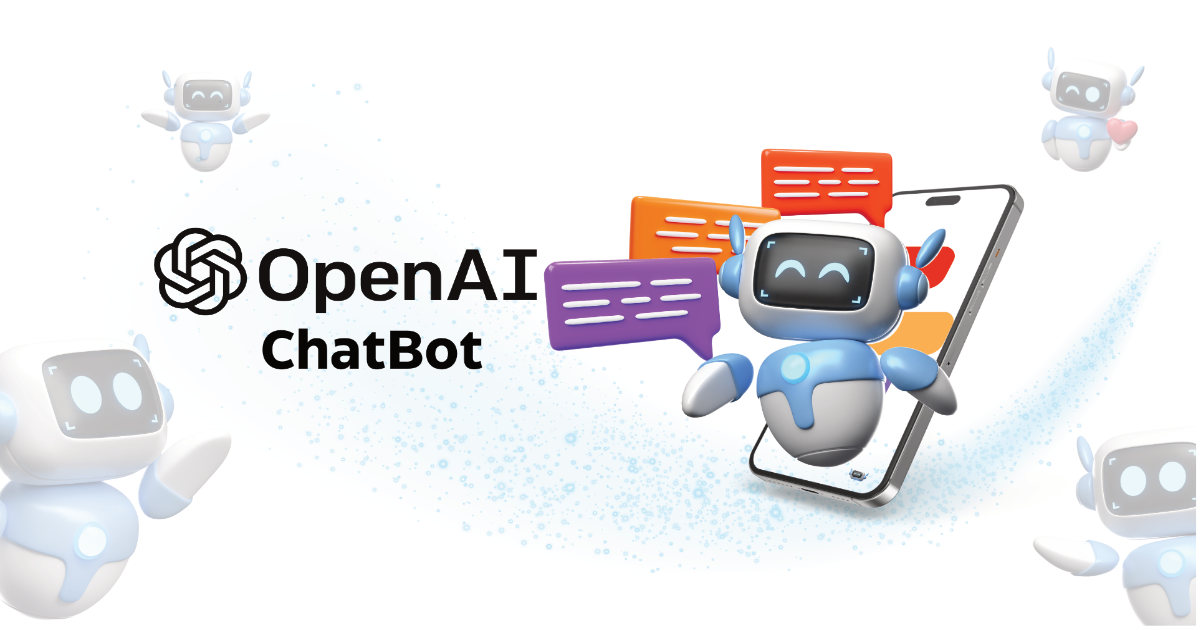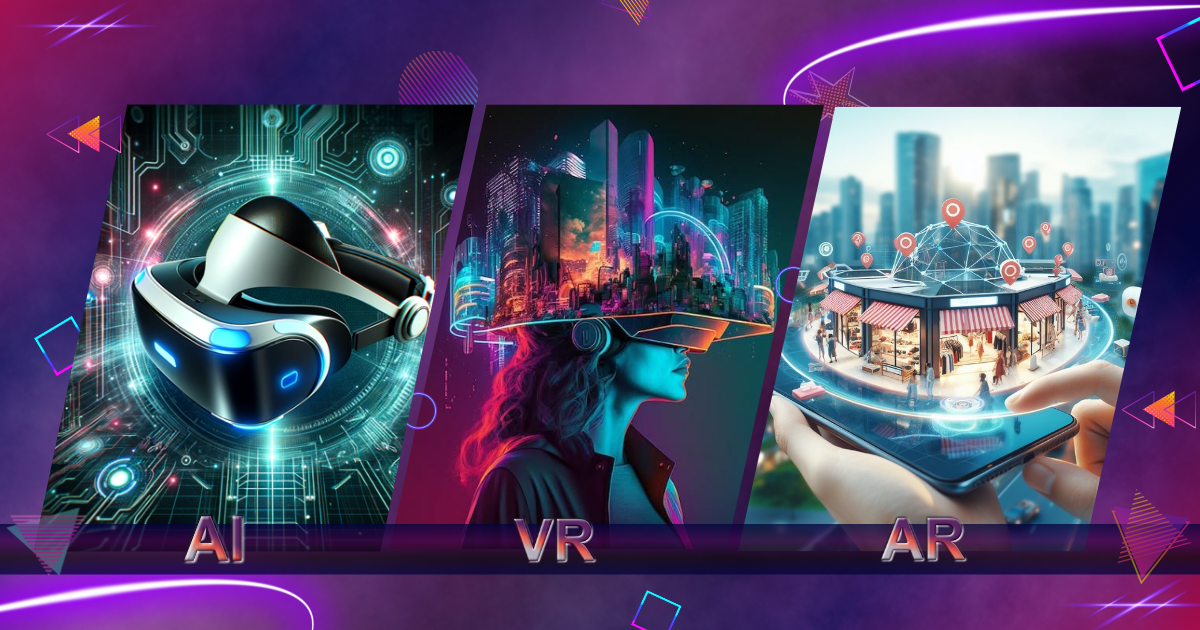 Artificial Intelligence (AI) has significantly transformed how we interact with technology, and one of the most prominent advancements in this field is the chatbot. OpenAI’s chatbot technology, built on its GPT (Generative Pretrained Transformer) models, has gained widespread recognition due to its ability to generate human-like conversations and responses. This article delves into the OpenAI chatbot, exploring its evolution, key features, applications, and impact from a professional SEO Specialist’s perspective.
Artificial Intelligence (AI) has significantly transformed how we interact with technology, and one of the most prominent advancements in this field is the chatbot. OpenAI’s chatbot technology, built on its GPT (Generative Pretrained Transformer) models, has gained widespread recognition due to its ability to generate human-like conversations and responses. This article delves into the OpenAI chatbot, exploring its evolution, key features, applications, and impact from a professional SEO Specialist’s perspective.
The Evolution of OpenAI’s Chatbot Technology
Early Days of AI in Conversational Systems
The concept of a chatbot isn’t new. Early forms of conversational systems, such as ELIZA (developed in 1966), used simple pattern-matching techniques to simulate conversation. However, these early systems were limited, offering little in terms of contextual understanding or flexibility in responses. They relied on predefined templates and couldn’t adapt to dynamic conversations, making them rigid and easily predictable.
As AI research progressed, so did the sophistication of chatbots. The introduction of machine learning, particularly neural networks, provided the foundation for developing models that could understand and generate more natural language. The major breakthrough came with the invention of transformers and the development of deep learning techniques, both of which paved the way for OpenAI’s GPT models.
The Birth of GPT: A New Era in Chatbots
In 2018, OpenAI introduced GPT, a language model that used transformer architecture to predict the next word in a sentence based on the words preceding it. This marked a significant shift in natural language processing (NLP). Instead of relying on rule-based approaches, GPT used deep learning to process massive datasets and generate coherent, contextually relevant text. GPT-2, released in 2019, further improved the model’s performance with larger datasets and more advanced training techniques, allowing the chatbot to generate longer and more sophisticated text.
GPT-3, released in 2020, pushed the boundaries even further. With 175 billion parameters, it became the most powerful language model at the time. GPT-3’s ability to understand context and generate highly realistic conversations made it the backbone of OpenAI’s chatbot capabilities. The model could now answer questions, hold meaningful conversations, write essays, and even perform tasks that required creativity, like composing poetry.
GPT-4 and Beyond: The Current State of OpenAI Chatbot
By the time GPT-4 was released, OpenAI had refined its chatbot technology to a point where it could handle more nuanced conversations, integrate better with various applications, and provide contextually accurate responses. This latest version of GPT, integrated into OpenAI’s chatbot, offers significant improvements in terms of contextual comprehension, fewer errors, and more human-like interactions. These improvements have made OpenAI’s chatbot a top-tier solution in conversational AI, utilized across industries.
GPT-2, GPT-3, and GPT-4: A Deep Dive into OpenAI’s Language Models
OpenAI’s GPT models have revolutionized the field of natural language processing (NLP) and conversational AI. Each iteration—GPT-2, GPT-3, and GPT-4—has introduced new capabilities and addressed limitations in previous versions. Understanding the evolution of these models provides insight into the incredible advancements in AI and how they’ve reshaped the landscape of chatbots and automation.

GPT-2: A Leap Forward in Text Generation
Release: 2019
GPT-2 marked the first significant leap in OpenAI’s GPT (Generative Pretrained Transformer) models. It was a groundbreaking language model at the time of its release, boasting 1.5 billion parameters, a massive increase over earlier models.
Key Features:
1. Scale of Training Data: GPT-2 was trained on a dataset called WebText, containing over 8 million web pages. This allowed the model to generate human-like text across a wide range of topics.
2. Coherent Text Generation: Compared to earlier models, GPT-2 was able to generate coherent, contextually relevant, and readable paragraphs. It was a major improvement in the quality of AI-generated text, making it suitable for content generation, language translation, and question-answering systems.
3. Open-Ended Text Generation: GPT-2 was unique in its ability to generate open-ended text rather than just predicting the next word. It could write entire paragraphs or articles, simulate conversations, and perform creative tasks like poetry writing.
Limitations:
• Context Length: While GPT-2 could generate impressive responses, it often struggled with maintaining coherence over long texts.
• Accuracy and Relevance: Though an improvement over earlier models, GPT-2 still had limitations in terms of producing factually accurate and relevant information consistently.
• Ethical Concerns: OpenAI initially withheld the full release of GPT-2 due to concerns that it could be misused to generate fake news, spam, or malicious content.
GPT-3: Setting a New Standard
Release: 2020
GPT-3 took the AI world by storm. With 175 billion parameters, it was significantly larger than GPT-2, resulting in dramatic improvements in text generation, conversation simulation, and overall model performance.
Key Features:
1. Unprecedented Scale: GPT-3’s 175 billion parameters made it the most powerful language model at its release. This massive scale enabled GPT-3 to generate even more coherent and contextually relevant text than GPT-2.
2. Few-Shot Learning: GPT-3 was capable of few-shot and even zero-shot learning. This meant that instead of needing large datasets for fine-tuning, GPT-3 could learn to perform new tasks based on just a few examples provided in the input.
3. High-Quality Text Generation: GPT-3 could generate near-human-level text across various domains. It excelled at tasks such as creative writing, answering complex questions, and simulating human conversation, which made it a game-changer for chatbots, content creation, and AI-driven applications.
4. Broad Applicability: GPT-3 was used across a wide range of industries, from automating customer support and generating marketing content to assisting with code generation and product recommendations.
Limitations:
• Context Limitations: GPT-3’s maximum context window (4,096 tokens) could still limit its ability to handle extremely long or multi-turn conversations without losing track of context.
• Bias and Misinformation: Like its predecessors, GPT-3 occasionally generated biased, incorrect, or inappropriate text. Since the model learned from a vast dataset scraped from the internet, it inadvertently absorbed some of the biases and misinformation present in the data.
• Resource Intensive: GPT-3’s size and computational needs made it resource-intensive, requiring significant infrastructure to run and making it less accessible for smaller organizations or individuals.
GPT-4: Pushing the Boundaries Further
Release: 2023
GPT-4 is the most advanced version of OpenAI’s GPT models, building upon the strengths of GPT-3 while addressing its shortcomings. While OpenAI has not released specific details regarding the parameter count, it’s widely assumed that GPT-4 is even more powerful and efficient than GPT-3.
Key Features:
1. Enhanced Contextual Understanding: GPT-4 can process larger contexts compared to GPT-3, allowing for more coherent and accurate responses in longer conversations or documents. This is particularly useful for chatbots and AI applications that require memory over multiple interactions.
2. Reduced Hallucinations: One of the key improvements in GPT-4 is its ability to reduce the frequency of hallucinations (incorrect or fabricated information). GPT-4 is more accurate in generating factual responses, thanks to better training and fine-tuning.
3. Multimodal Capabilities: GPT-4 introduced the ability to work with both text and images, allowing it to process and understand visual data alongside textual input. This makes it more versatile and capable of performing tasks that require visual comprehension.
4. Fine-Tuning and Customization: OpenAI has improved the customization options for GPT-4, allowing businesses and developers to fine-tune the model more effectively for specific use cases, such as customer service, content creation, or technical assistance.
5. Improved Multilingual Abilities: While GPT-3 was already competent in multiple languages, GPT-4 expands this capability, providing more accurate and nuanced responses in non-English languages, making it even more valuable for global businesses.
Limitations:
• Computational Resources: Despite improvements in efficiency, GPT-4 still requires substantial computational power, which limits accessibility for smaller organizations.
• Ethical and Privacy Concerns: Like its predecessors, GPT-4 raises ethical questions around the potential for misuse, including generating harmful content or violating user privacy. Regulatory and ethical oversight remains a challenge for AI applications at this level.
• Dependence on Data Quality: While GPT-4 has reduced hallucinations, it is still trained on vast datasets from the internet, meaning it can occasionally produce biased or incorrect information.
Key Features of OpenAI’s Chatbot
As a professional SEO specialist, understanding the key features that distinguish OpenAI’s chatbot from other conversational systems is crucial for leveraging it in content creation and user interaction.
1. Natural Language Understanding (NLU)
OpenAI’s chatbot excels in NLU, which allows it to understand complex language patterns, idiomatic expressions, and even subtle nuances in text. This is essential in ensuring the chatbot’s responses feel more human-like, enabling brands to connect with their audience in a more personalized manner.
For SEO specialists, this capability is invaluable when creating content that needs to engage users. The ability to understand user intent through NLU allows the chatbot to provide accurate and relevant responses, leading to improved user satisfaction and engagement metrics.
2. Contextual Awareness
Unlike earlier chatbots that struggled with maintaining context over extended conversations, OpenAI’s chatbot can retain context and adjust its responses accordingly. This ability is particularly useful for businesses that want to deploy chatbots for customer support, as the system can keep track of previous interactions and ensure continuity in the conversation.
In SEO, contextual awareness helps in enhancing user experience on websites. A chatbot that understands the user’s journey on the website can offer timely suggestions, resolve issues more effectively, and guide users to relevant content or products, ultimately improving conversion rates.
3. Content Generation and Creativity
One of the standout features of OpenAI’s chatbot is its ability to generate creative content. Whether it’s generating blog posts, answering user questions, or even writing poetry, the chatbot is highly adaptable to different content formats. For an SEO specialist, this opens up a world of possibilities for automating content creation.
From creating keyword-optimized content to generating meta descriptions and even rewriting existing articles for better SEO performance, OpenAI’s chatbot can serve as a valuable tool in scaling content production efforts.
4. Personalization and User Experience
The chatbot’s ability to offer personalized responses makes it a game-changer for businesses. By analyzing user data and previous interactions, OpenAI’s chatbot can tailor its responses to meet individual user needs, creating a more customized experience.
Personalization is a key factor in modern SEO strategies. Google’s algorithms increasingly reward websites that offer tailored experiences, and integrating a chatbot that can personalize conversations based on user intent can significantly boost SEO rankings.
5. Multilingual Capabilities
OpenAI’s chatbot supports multiple languages, making it accessible to a global audience. As the internet becomes more diverse and localized SEO becomes more critical, having a chatbot that can converse in various languages is a huge advantage. This feature allows businesses to expand their reach and provide support to users across different regions, further enhancing SEO potential by targeting different linguistic demographics.
Applications of OpenAI’s Chatbot in SEO and Digital Marketing
As a professional SEO specialist, the OpenAI chatbot can be integrated into various aspects of SEO and digital marketing strategies. Here are a few ways this technology can be used to enhance online presence and user engagement.
1. Content Generation
The ability of OpenAI’s chatbot to generate high-quality, relevant content is one of its most useful applications in SEO. Content is still king in SEO, and being able to produce fresh, engaging, and optimized content consistently is key to improving search engine rankings. The chatbot can generate a variety of content formats, including:
• Blog posts
• Meta descriptions
• Product descriptions
• FAQs
• Social media content
By leveraging the chatbot’s content generation capabilities, businesses can maintain a steady flow of content that keeps their website dynamic and updated, which search engines favor.
2. Enhancing User Engagement
User engagement is a critical factor for SEO performance. A chatbot can keep users engaged by providing immediate responses to their queries, guiding them through website navigation, and offering personalized recommendations. The more engaged users are on a website, the lower the bounce rate, which positively affects SEO rankings.
OpenAI’s chatbot can be integrated into websites to answer questions, help with product searches, or even guide users through complex processes like product purchases. This not only improves user experience but also increases the time users spend on the site, both of which are important ranking factors for search engines.
3. Customer Support and Retention
Customer support is an area where chatbots shine. OpenAI’s chatbot can handle multiple customer queries simultaneously, offering quick and accurate responses, thus improving customer satisfaction. From an SEO perspective, a satisfied customer is more likely to leave positive reviews, engage with the website, and share their experience, all of which contribute to better SEO outcomes.
Moreover, chatbots can help reduce the bounce rate by keeping users engaged, resolving issues quickly, and improving overall user satisfaction, factors that are critical for SEO.
4. Data-Driven Insights and SEO Strategy
OpenAI’s chatbot can collect and analyze data from user interactions, providing valuable insights into user behavior, preferences, and frequently asked questions. This data can inform SEO strategies by highlighting what users are most interested in, what keywords they are using, and which content performs best.
SEO specialists can use this information to create more targeted content, optimize keywords, and adjust site structure to improve overall performance. Additionally, chatbot-driven insights can help businesses anticipate user needs, allowing for proactive content creation that addresses specific queries and pain points.
Challenges and Considerations for Using OpenAI’s Chatbot
While the OpenAI chatbot offers numerous advantages, there are also challenges and considerations to keep in mind when integrating it into SEO and digital marketing strategies.
1. Ensuring Accuracy and Relevance
One of the key challenges with using any AI-based content generation tool is ensuring the accuracy and relevance of the information provided. While OpenAI’s chatbot is highly advanced, it can still generate incorrect or outdated information. As an SEO specialist, it’s important to monitor the content created by the chatbot and verify its accuracy before publishing it to avoid potential misinformation.
2. Balancing Automation with Human Oversight
Automation can be a double-edged sword in SEO. While it can save time and resources, it’s important to balance automation with human oversight. OpenAI’s chatbot is an excellent tool for generating content and engaging users, but human SEO specialists should still oversee the process to ensure that the chatbot aligns with the brand’s voice, tone, and SEO objectives.
3. Ethical and Privacy Considerations
As chatbots become more integrated into customer interactions, ethical and privacy considerations come to the forefront. OpenAI’s chatbot collects and processes user data, which raises concerns about data privacy and the ethical use of AI in marketing. Businesses must ensure that they comply with data protection regulations like GDPR and offer transparency about how user data is collected and used.
4. Avoiding Over-Optimization
While chatbots can help with SEO, over-optimization can lead to unintended consequences, such as keyword stuffing or creating content that feels artificial. OpenAI’s chatbot must be used carefully to avoid these pitfalls, ensuring that the generated content remains valuable and engaging for users rather than focusing solely on SEO metrics.



